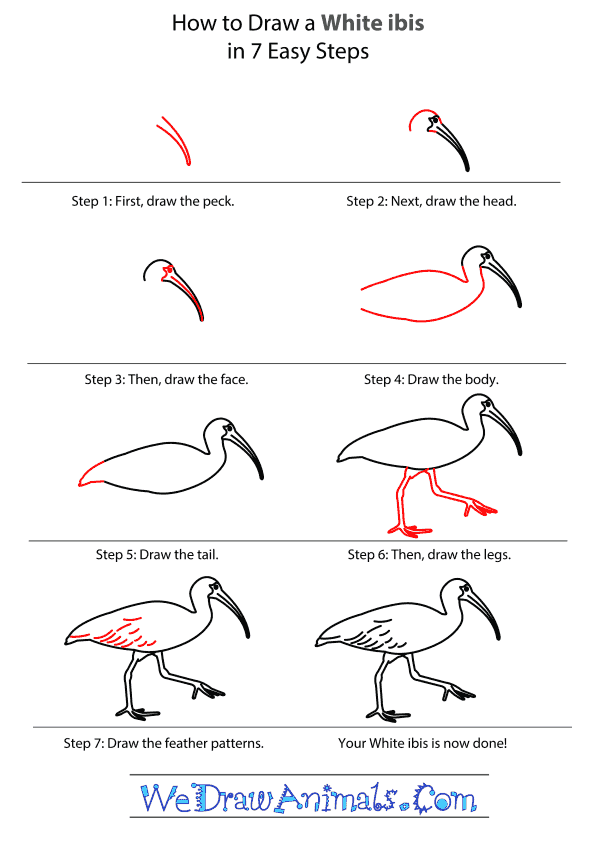In this quick tutorial you'll learn how to draw a White Ibis in 7 easy steps - great for kids and novice artists.
The images above represent how your finished drawing is going to look and the steps involved.
Below are the individual steps - you can click on each one for a High Resolution printable PDF version.
At the bottom you can read some interesting facts about the White Ibis.
Make sure you also check out any of the hundreds of drawing tutorials grouped by category.
How to Draw a White Ibis - Step-by-Step Tutorial
Step 1: First, draw a curved line for the beak of your white ibis. They stick this long beak in the water to feel for prey that they can't see.
Step 2: Now draw the head. It is rounded.
Step 3: Add a line to divide the beak in half, and another line across the top of the beak. Add an eye.
Step 4: Next, draw the body. Start with a neck, and then make two curves. Leave space for the tail.
Step 5: The tail can be drawn as a triangle that droops slightly downward.
Step 6: Give your bird long, thin legs. He needs them long so that he can stand in the shallow water.
Step 7: Last, add the feather pattern. To color your white ibis, the bird's beak and legs are an orange-red. Leave the feathers white.
Interesting Facts about the White Ibis
The American white ibis (Eudocimus albus) is a bird that is found in many coastal areas throughout North and Central America. This is a medium sized bird with a long, curved bill and white and black feathers.
Did you know?
- The American white ibis feeds mostly on insects, crabs, snakes, amphibians, and small fish that live beneath shallow water. They use their beak to search below the waterline and inside underwater burrows for prey.
- Due to pollution, the nesting and mating behavior of the American white ibis has been affected and has resulted in a lower population.
- Like many birds, they fly in flocks with their necks and legs outstretched in a V pattern.
- Since they usually live in wetlands, marshes and swamps, the American white ibis has webbed feet which help it keep its balance in muddy and uneven waters.
- Males are significantly larger than females, with males weighing nearly two pounds while females weight less than one.
Lesson plan note: Show a picture of the American white ibis and discuss how the shape and length of its beak and webbed feet would help aid its ability to find food and navigate in its natural environment.








